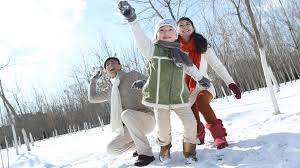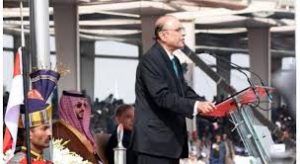In China’s coldest places, tourism warms up

China Economic Net
Beijing: The New Year comes with Northeast China’s coldest days, but it’s also peak season for winter tourism of both conventional and unconventional sorts.
With COVID-19 epidemic prevention and control in mind, Heilongjiang province is promoting a series of measures for the winter season that include the development of online tourism products, officials said recently.
“The cloud has become a new mode of tourism, as the accelerated construction of new infrastructure, including 5G and data centers, provides a new driving force,” said Zhang Lina, head of Heilongjiang’s culture and tourism bureau. “Since the spring of 2020, we have integrated pictures, videos, panoramic virtual reality and some other resources from all 13 cities in the province to launch a series with the theme ‘Traveling in Heilongjiang online’, which provides tourists with a new way to appreciate the beautiful scenery of our province without leaving home.”

“The province has also rolled out 15 winter tourism destinations and 10 ways for visitors to enjoy the winter there,” Zhang said. “Tourists can ski or experience winter art, go sightseeing or hiking or fishing. They can soak in hot springs or take in folk customs and cultural performances during their stay. Heilongjiang is typically the first place in China to greet winter.”
Tourists can only enter tourist attractions after booking online, and the number of tourists will be strictly limited,” she said, adding that rated hotels and tourism accommodations are required to carry out regular disinfection.
According to a report released by Chinese travel website Mafengwo in December, the most popular winter tourism destination during the New Year’s holiday is Harbin.
Themed “Harbin: The Pearl on the Crown of Ice and Snow”, activities started in early November and will run until April, overlapping some of China’s traditional holidays, said Li Geng, deputy director of the city’s culture and tourism bureau.
A major draw for Harbin, known as “Ice City”, is its more than 400 activities during the period. They cover tourism, culture, art, fashion, sports and trade, Li said.





